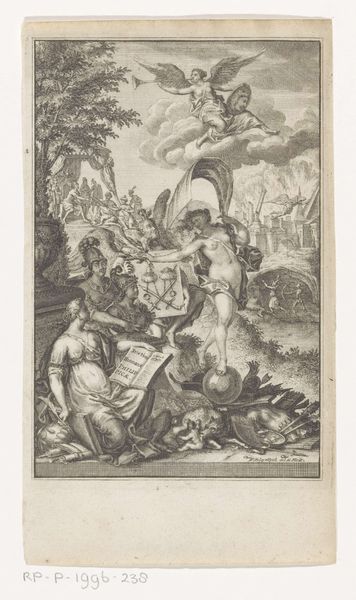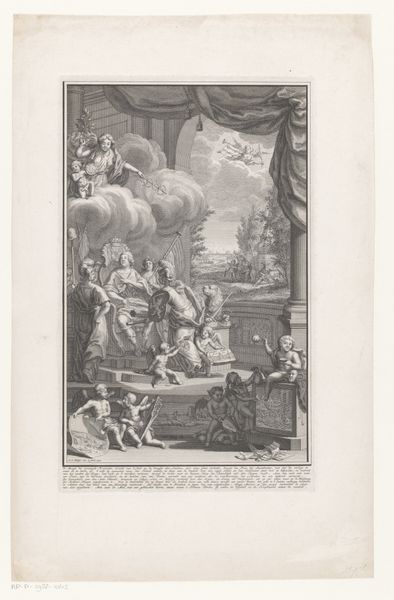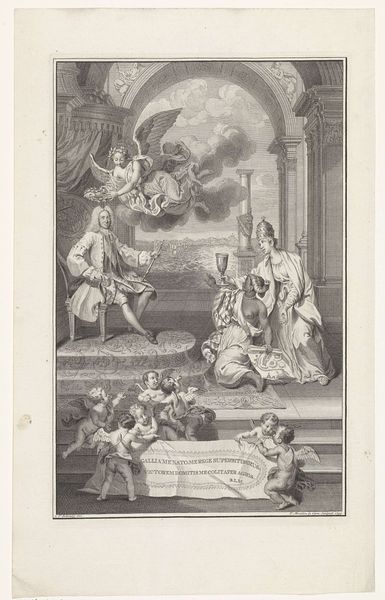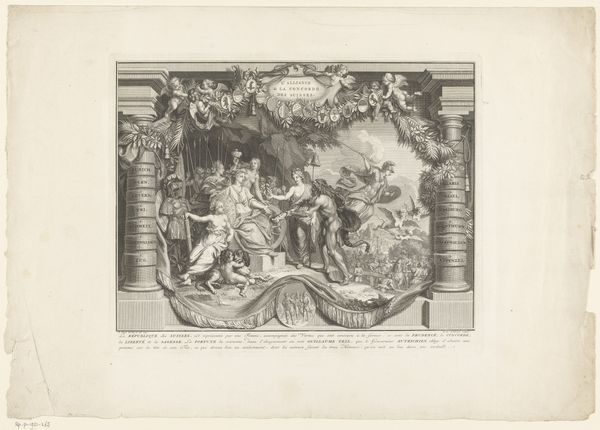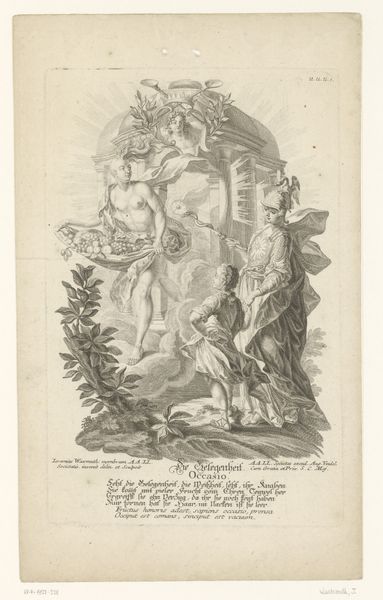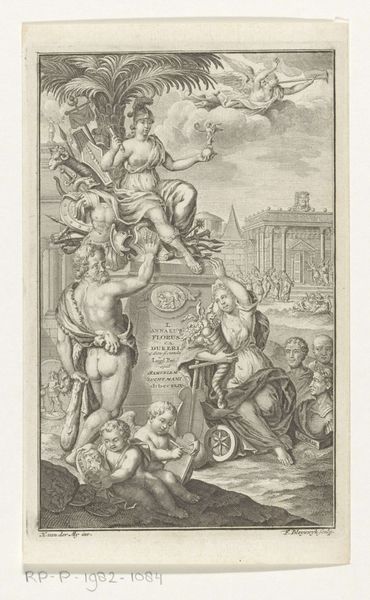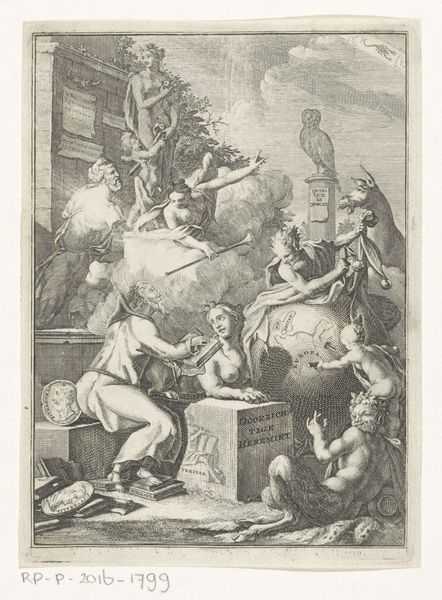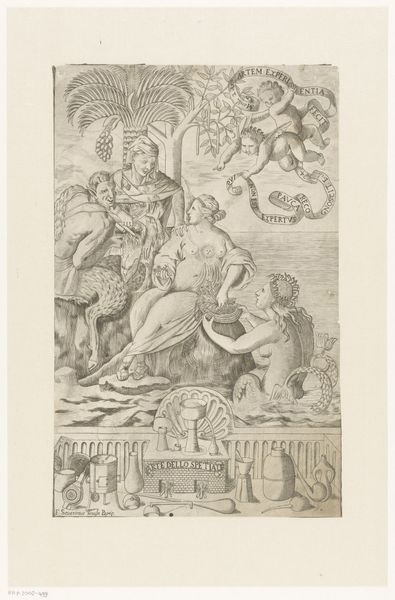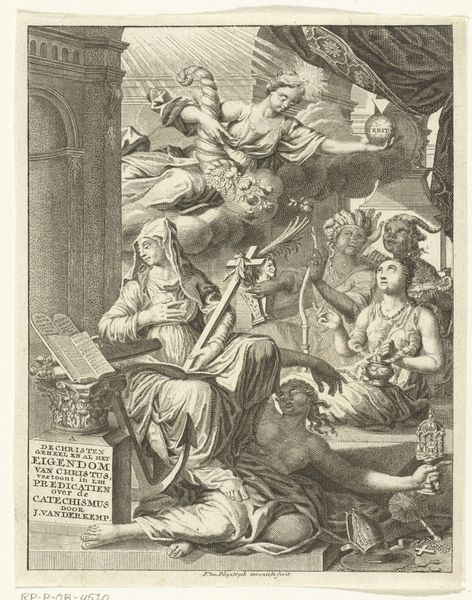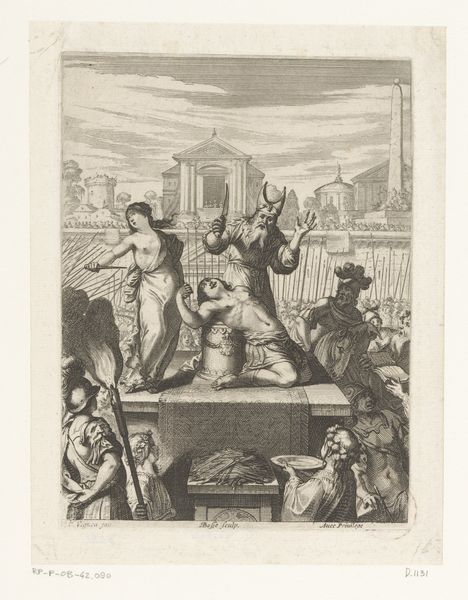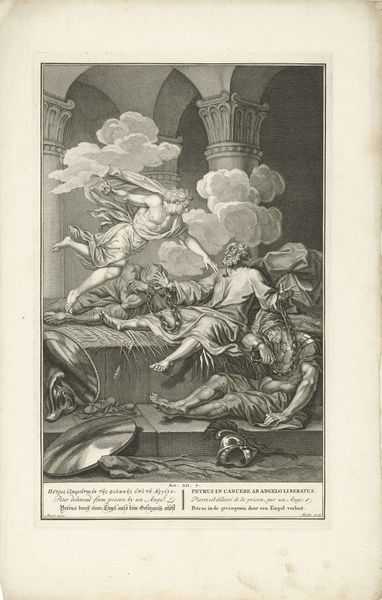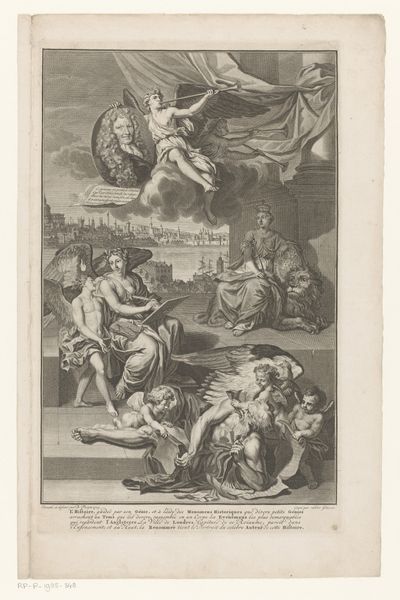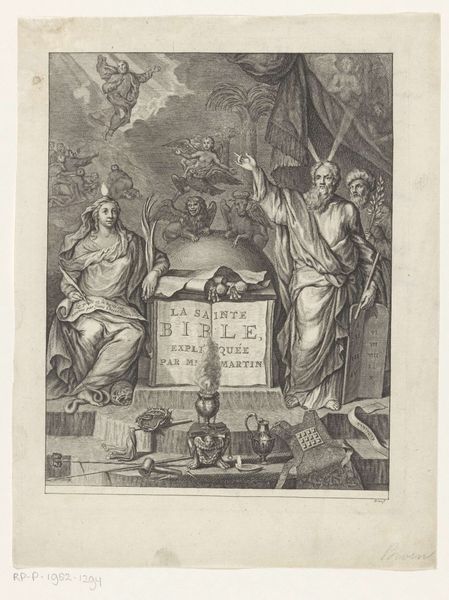
print, engraving
#
baroque
# print
#
old engraving style
#
figuration
#
line
#
history-painting
#
engraving
Dimensions: height 301 mm, width 186 mm
Copyright: Rijks Museum: Open Domain
Curator: Jan Goeree created this engraving in 1726. Titled "Ezechiël en Mozes, profeten van het oude testament," it depicts the prophets Ezekiel and Moses. Editor: It feels very imposing and staged, almost theatrical. All those figures crammed into the frame create a sense of... weight, I guess? What's striking me are the contrasting textures - the sharp lines of the architecture versus the soft rendering of the figures' robes. Curator: The Baroque style certainly lends itself to the dramatic staging, as you say. Goeree uses line engraving to present Ezekiel on a throne and Moses standing beside him, seemingly bestowing guidance or knowledge upon a kneeling figure. The angels and divine light add to the feeling. Editor: It’s hard to miss those angels and that blazing fire! But what's the message behind the fire? It feels like divine revelation or, conversely, destruction? Is it a patriarchal message, maybe, about power and legacy handed down from father figures? Curator: Fire frequently serves as a symbol of both purification and divine presence. I read the arrangement and setting of figures as suggesting a continuous lineage of prophetic vision, perhaps reinforcing the spiritual and political authority of the era. It is worthwhile to study the arrangement of the angels above in parallel with the actions of the people down below; the two halves mirroring the transfer of meaning. Editor: The attention to detail really reinforces that. The angels above, the detailed inscriptions that seem to be on display… This really comes across like it could be from the time period’s particular propaganda machine. Not necessarily propaganda in the manipulative sense, but the intentional building of narrative to affirm certain powers. Curator: Indeed. In these representations, power is expressed through established symbolic order. Notice how the figures holding tablets are positioned to create a dialogue with a higher power, hinting at humanity’s access to cosmic knowledge. Editor: It’s like they're physically manifesting an ideological structure. Overall, while its artistry is noteworthy, I see "Ezechiël en Mozes" as a strong visual statement rooted in its time period. It's important for viewers today to see that this image reflects a complex network of historical ideas that continue to shape us. Curator: Ultimately, art like this enables us to observe, interpret, and question these continuities of meaning that travel through time. I'm always grateful to uncover the historical context carried within it.
Comments
No comments
Be the first to comment and join the conversation on the ultimate creative platform.
